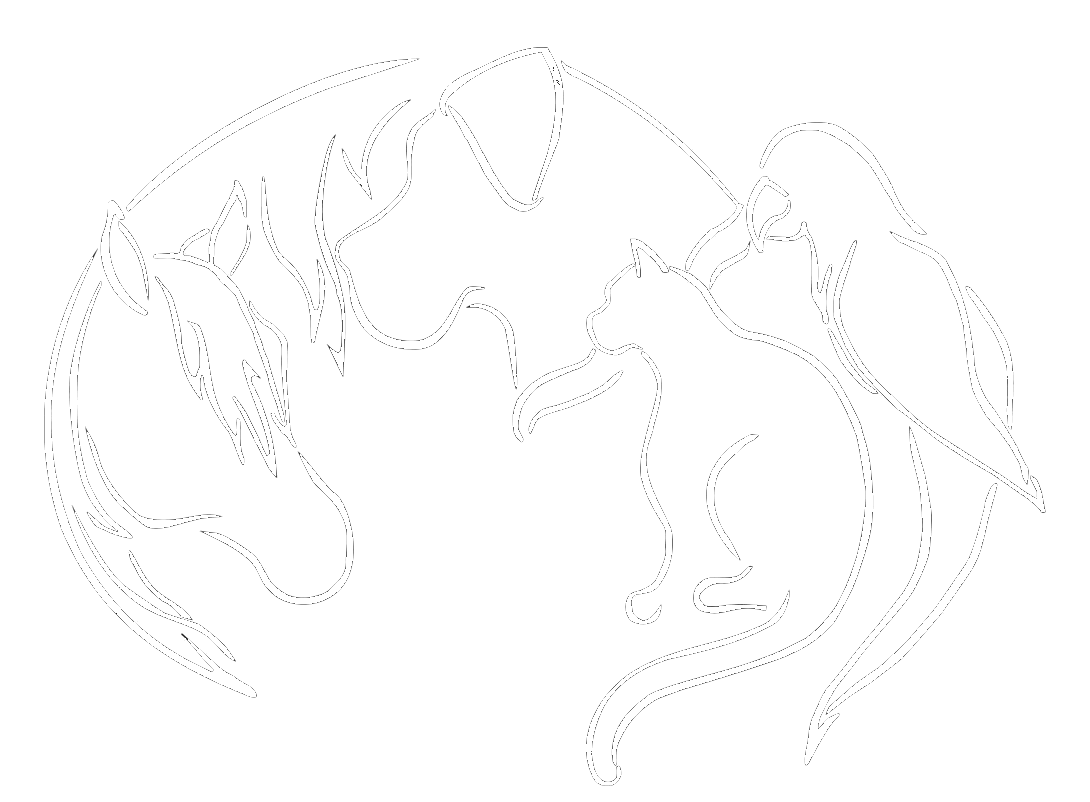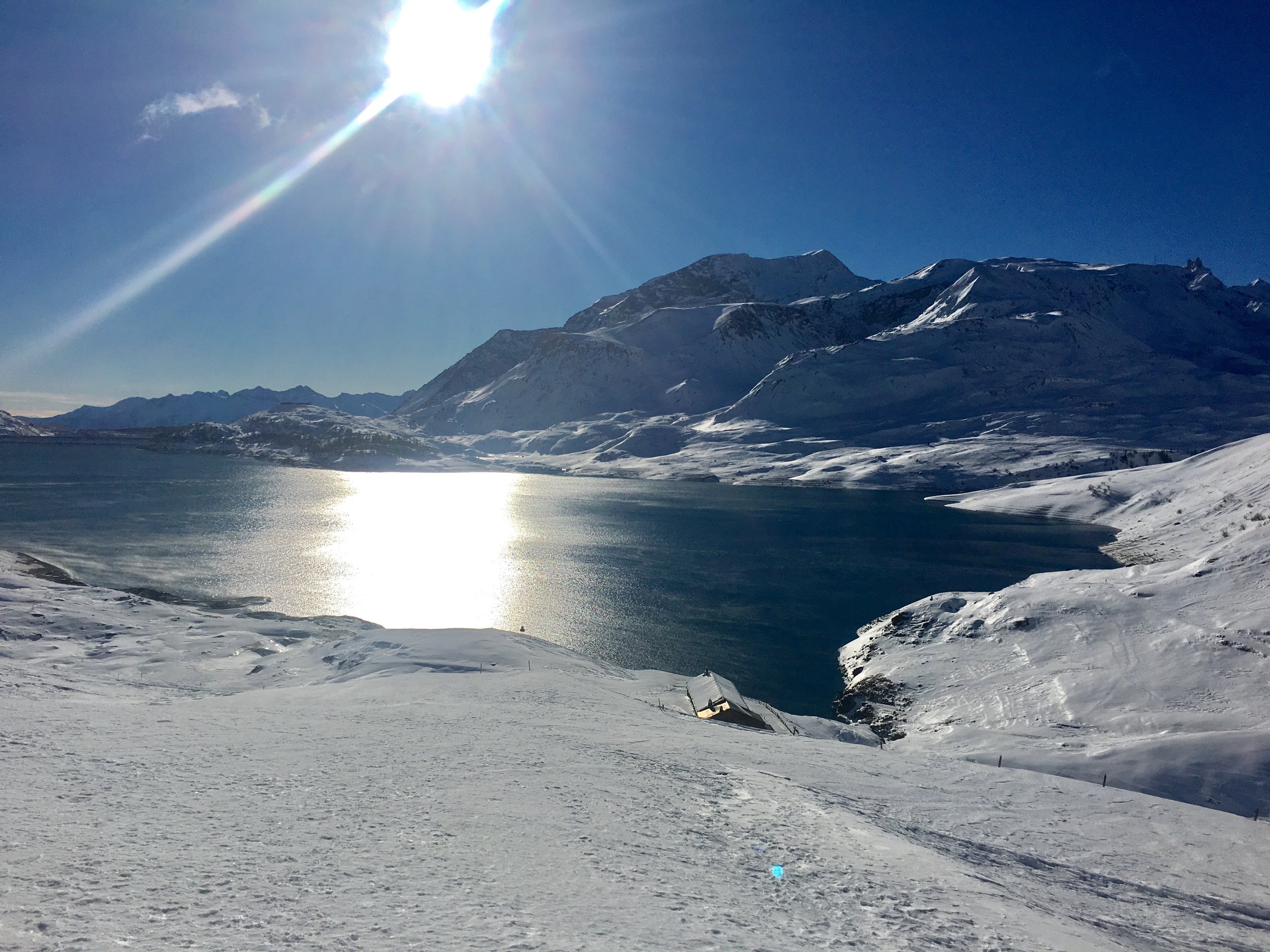Pralognan la Vanoise, one of the beautiful villages we were working in.
This year I had the opportunity to join the vet team for La Grande Odyssée, a long-distance staged dogsled race that travels through the French Alps. I was very excited to work on a staged race for the first time, which is very different from the Quest, and I was also lured by the promise of French food and little French villages tucked into the Alps.
Dog team hanging out above the clouds of Grand Massif.
I arrived in France at the beginning of January. There are four different races that take place during La Grande Odyssée - a long distance race, a mid distance race, and two shorter races that only last 3 days each. Every day the mushers, race officials, logistics team and vet team travel to a different village to set up the stage, which involves making a start and finish chute, musher parking, and a small mobile veterinary hospital. The mushers drive smaller teams - 10 dogs for the long distance racers, 8 dogs for the mid-distance racers, as opposed to the 14 dogs that Quest mushers drive - and because they're not camping overnight, their sleds are astonishingly light. It typically take teams between 3-6 hours to complete a stage, and once the teams complete a stage, the dogs hang out at their dog truck rather than camping in straw on the gangline.
Dr. Sandrine Pezard working on a race dog.
One of the big differences between La Grande Odyssée (LGO) and other races I have worked on was the array of diagnostic equipment we had available. Because we reached every checkpoint by road, we were able to set up a small mobile hospital at each checkpoint with an x-ray, ultrasound and blood chemistry analyzers. While the bread and butter of sled dogs vets are lameness and diarrhea, which usually don't require diagnostic equipment to diagnose or manage, these tools were very useful for the more unusual cases that presented. One of the most dangerous conditions that can occur in sled dogs is myopathy, a condition where diffuse, widespread breakdown of muscle tissue releases proteins that can cause kidney failure and sudden death. The clinical signs of this disease are distressingly subtle - a dog may begin to pull less hard, or adopt an unusual gait, or may collapse in the harness but spring back up again within a few minutes and scream to start moving again. Often there will be a characteristic coffee-brown urine that helps point you towards the correct diagnosis, but we're not always lucky enough to catch that sign. On LGO this year we had a dog who came in weak and reluctant to get up from laying down, but the musher had not noticed any brown urine. When we ran his bloodwork we found a severe elevation in his creatinine kinase, an enzyme that acts as a biomarker for muscle damage. This told us that the dog had myopathy and could potentially go into a life-threatening crisis if not treated, so we started him on high rates of iv fluids to help protect his kidneys and flush out the damaging proteins, and the dog recovered uneventfully.
Dog team running through the pouring rain in Pralognan la Vanoise.
The weather added a challenge to the LGO that I hadn't anticipated. While the weather conditions overall were much warmer than what Quest veterinarians experience (I think our all-time low was -15 C on top of Mont Cenis), we didn't have the infrastructure available on northern dogsled races. Having heated checkpoints on the Yukon Quest and other northern races is critical when temperatures can drop to -40 C or below, but in the more hospitable weather of the LGO our checkpoints were unheated, 3-walled tents that we would erect and take down each day. This made it very challenging to keep iv fluids and iv medications from freezing. I had a small pharmacy of various injectable medications tucked into the internal pockets of my parka, and we would try to keep iv fluids thawed on the dashboards of our vans. Administering iv fluids to dogs was hugely challenging, as the fluids would try to freeze in the administration line, and we would have to take advantage of supplies we had and the generosity of people around us with various forms of heat to keep the fluids running.
Lac Cenis, with the dogsled trail on the far left.
The vets on the LGO were incredibly smart and generous with their knowledge, the mushers were good humoured and devoted to their dogs, the dogs were strong and brave and silly and adorable, and the Alps were breathtaking. But I missed the rhythm of the races up here - the punishing frenzy of the first 48 hours of the Quest contrasting with the quiet moments between teams arriving when you can walk through the dogyard and spy on a dog you were worried about to make sure they're wagging their tail and eating well. I am incredibly grateful to head veterinarian Dr. Yannick Klein as well as the entire La Grande Odyssée race organization for allowing me to come and learn from them. I'm heading up to Dawson to work on the Percy again in March, and can't wait to be out in the dogyard again.
When you've been ready to go for hours but your musher is still eating breakfast.







